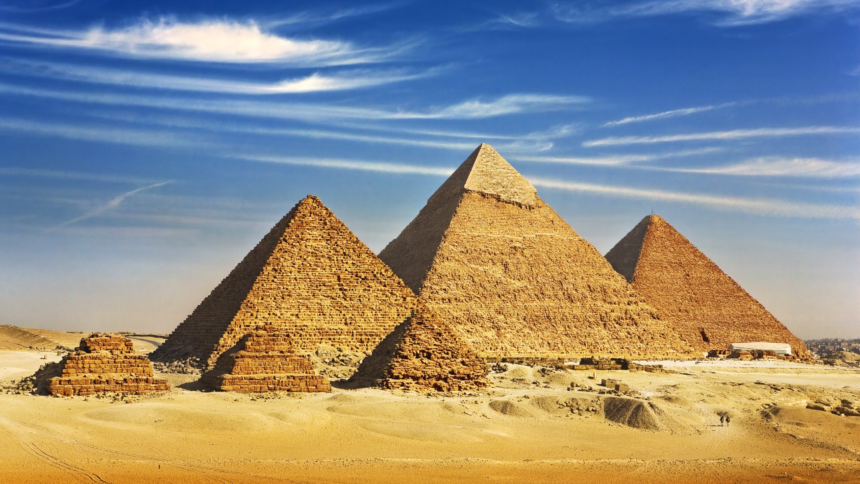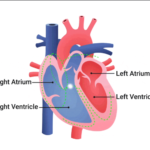The Pyramids of Giza : Explore the rich history and secrets behind The Pyramids at Giza, unlocking the wonders of ancient civilizations with captivating insights.
The Pyramids of Giza : Introduction
The Pyramids of Giza : The Pyramids at Giza, standing as enduring monuments to Egypt’s Old Kingdom era, have fascinated the world for centuries. Built approximately 4,500 years ago, these colossal structures were constructed to serve as the final resting places for pharaohs who aspired to become gods in the afterlife. While the purpose and grandeur of the pyramids are well-known, the intricacies of their construction and the treasures hidden within them remain a subject of great mystery.
ALSO READ : The Bab Al Mandeb : Navigating Through The Gateway Of Global Tensions And Trade
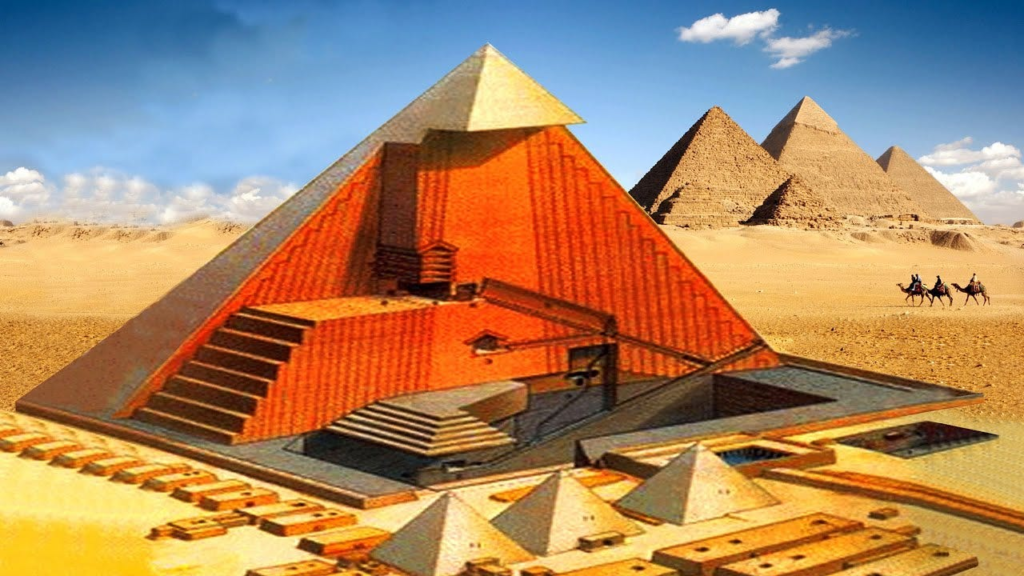
Builders of the Pyramids
The Pyramids of Giza : Pharaoh Khufu initiated the construction of the first and largest pyramid in Giza around 2550 B.C. Standing at approximately 481 feet, Khufu’s Great Pyramid was a colossal feat of engineering, comprised of an estimated 2.3 million stone blocks, each weighing between 2.5 to 15 tons. Khafre, Khufu’s son, followed suit by building the second pyramid, incorporating the enigmatic Sphinx within his necropolis. Menkaure, Khafre’s son, constructed the third and smallest of the Giza Pyramids around 2490 B.C.

Construction techniques
The Pyramids of Giza : The construction of the pyramids at Giza remains a topic of debate among scientists and engineers. Skilled Egyptian workers, residing in a temporary city nearby, undertook this monumental task. Archaeological evidence reveals a highly organized community supported by strong central authority. Materials like granite from Aswan quarries, copper tools from the Sinai Peninsula, and timber from Lebanon were transported using the Nile and artificial waterways.
The exact construction process is still uncertain, with theories proposing the use of large ramps, either external zig-zagged or internal, to move massive stone blocks to the pyramid’s heights. Sledges, ropes, rollers, and levers were likely employed in conjunction with water or wet clay to grease the ramps, facilitating the transportation of these enormous stones.
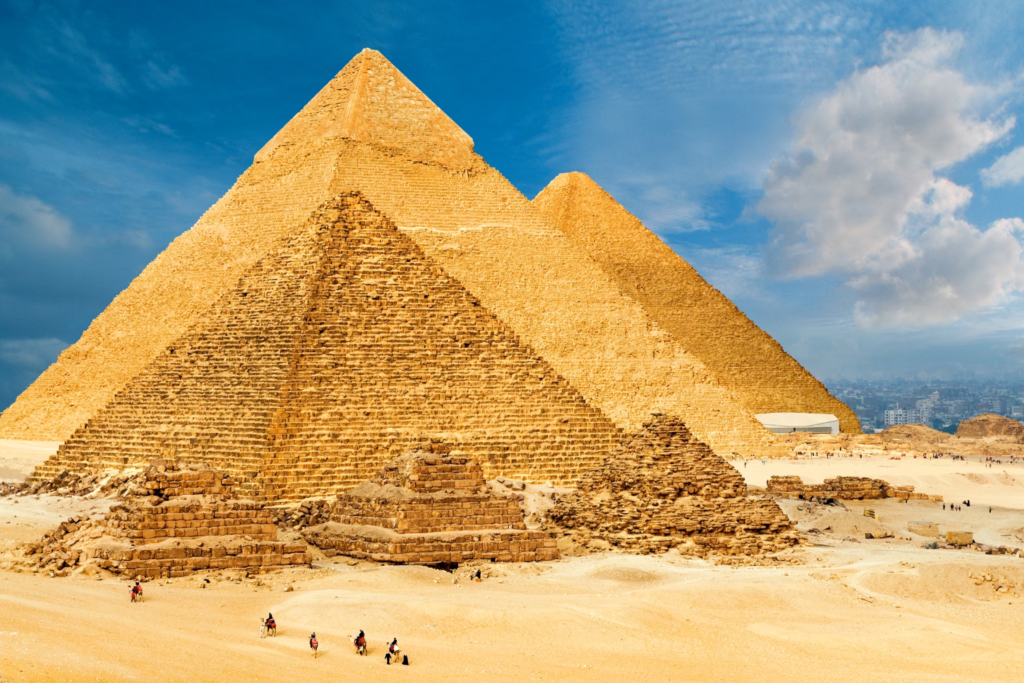
Exploring the Pyramids
The Pyramids of Giza : The Giza Plateau is not just a cemetery but a window into ancient Egyptian life. The Giza Project, an extensive online repository, offers access to photographs, plans, drawings, manuscripts, and expedition diaries, allowing researchers to delve into every aspect of Pharaonic civilization. The site’s tomb art captures scenes of farming, livestock tending, fishing, hunting, carpentry, religious rituals, and burial practices, providing a comprehensive view of daily life in ancient Egypt.
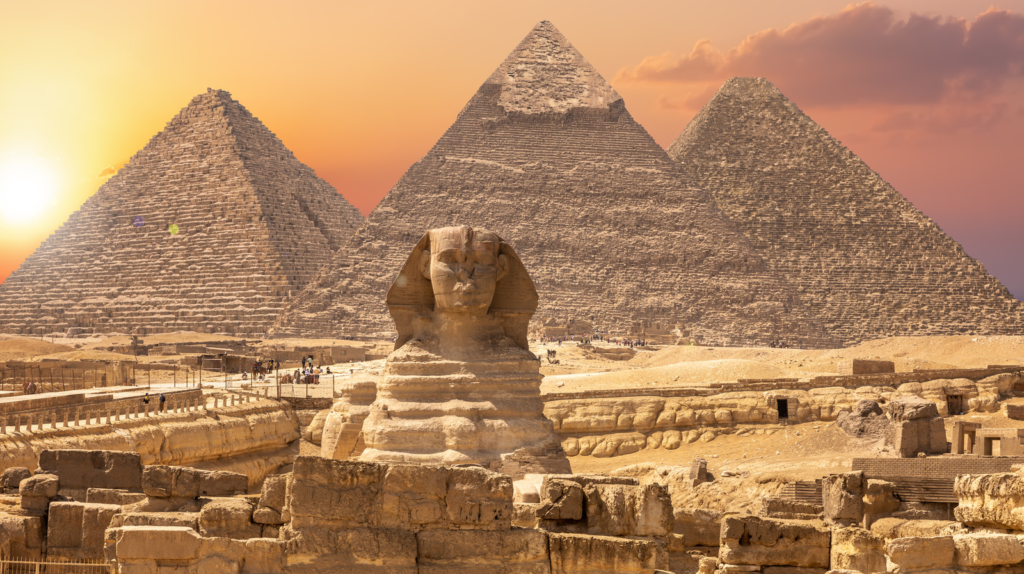
Ongoing discoveries
The Pyramids of Giza : In addition to the groundbreaking revelations brought forth by the ScanPyramids project, ongoing archaeological investigations at the Giza plateau have further intensified the mystery surrounding these ancient marvels. Recent excavations have unearthed artifacts and inscriptions that shed light on the religious and cultural significance of the pyramids, providing valuable insights into the daily lives of the ancient Egyptians.
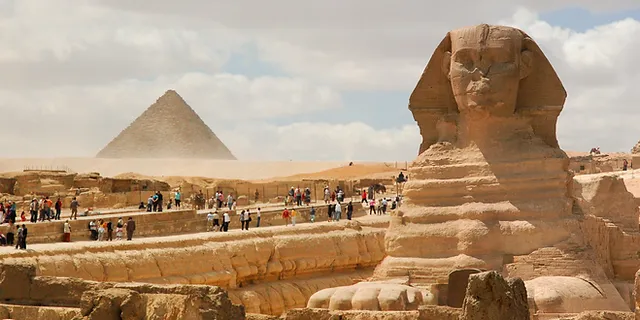
Moreover, advancements in non-invasive imaging technologies have enabled researchers to create detailed 3D models of the pyramids’ interiors, allowing for a more comprehensive understanding of the architectural techniques employed by the ancient builders. As scholars delve deeper into the intricacies of the construction process, the pyramids of Giza continue to captivate the world with their enigmatic allure, serving as a testament to the ingenuity and sophistication of ancient civilizations.
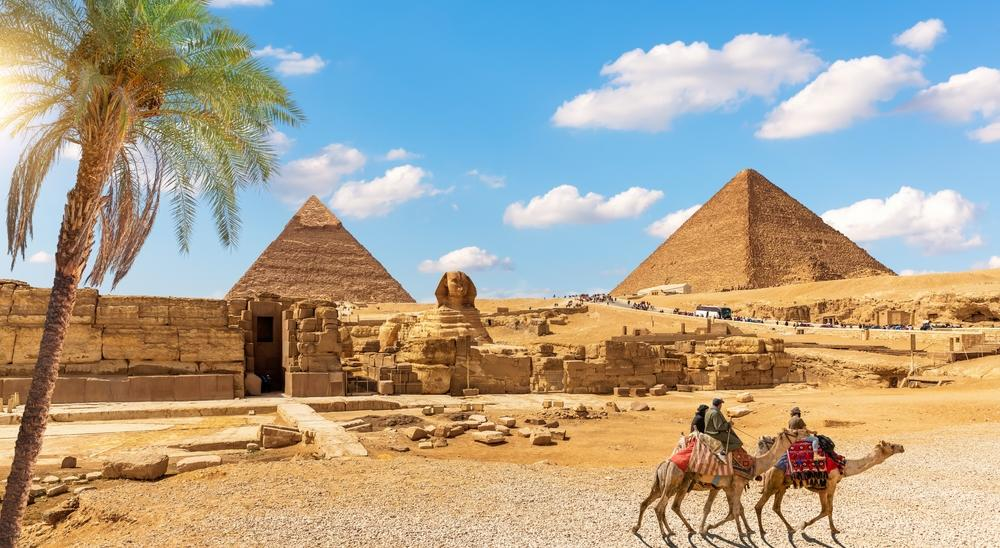
Conclusion
The Pyramids at Giza stand as eternal witnesses to the grandeur and mystery of ancient Egypt. While the secrets of their construction continue to elude us, ongoing research and technological advancements promise to unveil more about these iconic structures. The Giza Project and ScanPyramids project, along with virtual tours like GIZA 3D, provide invaluable insights into the past and ensure that the wonders of Giza are accessible to people worldwide, transcending the boundaries of time and space.
To explore more news : Click Here
ALSO READ : The Arabian Sea : A Maritime Gateway And Ecological Treasure







